According to Global Market Insight, the furniture market size exceeded USD 545.78 billion in 2020, growing at a CAGR of 5.4% during 2021-2027. If you enjoy designing homes, working with the public, and building a lucrative business profit, then a furniture store may be the right choice for you. First, you can learn how to start a furniture business with the following in-depth guide. We’ve rounded up 13 easy steps for you to build your own furniture store. By following these steps, you will ensure that you plan well, register your new business properly, and comply with the law.
Step 1. Learn about furniture industry markets and trends
Understand the furniture industry market and trends before starting a business
1) Driving Factor
A recent report by Allied Market Research stated that the global furniture market is expected to reach $800.596 billion by the end of 2025. Several factors drive the market, including:
- increase in disposable income
- Development of real estate and hospitality
- Demand for high-end luxury furniture by specific consumer groups
- Increase in multifunctional furniture, with additional storage facilities as the number of tiny houses increases
2) Key Market Segments
Key market segments of the furniture industry
The e-commerce sector will drive furniture sales, in part because people use online interactive room design software to design the interiors of their home.
- Generally, buildings that use a lot of furniture include offices, laboratories, spas, restaurants, retail stores, libraries, bedrooms, camping, outdoors, and parks.
- In commercial spaces, enclosed interiors help organize seating and document storage, maximizing space and aesthetics.
Do you think the furniture business idea is more feasible and direct? Now prepare how to open a furniture store in the next step.
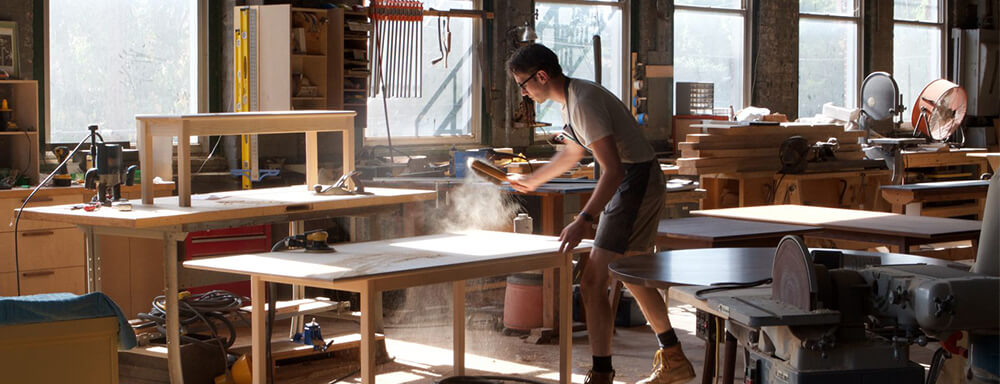
Step 2. Identify target market
Identify your target market when opening a furniture store
1) Determine your occupation
You need to decide clearly what kind of furniture you are going to create. The furniture can be office furniture, home furniture, or cabinets. One of my friends does bathroom furniture, which is a very niche market. As a professional bathroom furniture manufacturer, he gets great success. Just do Next, you can specify the material you intend to use, such as upholstery, wood, or metal.
2) Identify the target market
Next, you need to define your specific target customers as residential, commercial, or vacation areas. Also, do you only sell locally or develop a wider market?
3) Do a market analysis to assess your furniture needs
After identifying your target market, you can consider their distinctive characteristics and needs. Also, you want to compare with your competitors to find out what they don’t offer. It’s like filling a void in the market.
Finally, you need to do a market analysis to determine the right pricing model for your target market and product.
Step 3. Develop a business plan
Develop a business plan that defines how to start a furniture business
1) Write an explanatory company description
If you want your furniture business to be successful, you must invest time in defining a marketing strategy, managing the business, and developing financial and organizational planning. An explanatory company description can help you start a furniture business:
- the type of furniture you produce
- how do you make your product
- What makes you different from your competitors
- your target customers
- Your product line (the type of furniture you make, the materials you use, and how it can benefit your customers)
- Research other furniture manufacturers to see how your business is responding to market demands
2) Drawing the business model canvas
You can use the Business Model Canvas template to visualize relationships along the value chain, from internal employees to suppliers and customers. It’s a useful tool to make sure you don’t forget any element of your business ecosystem.
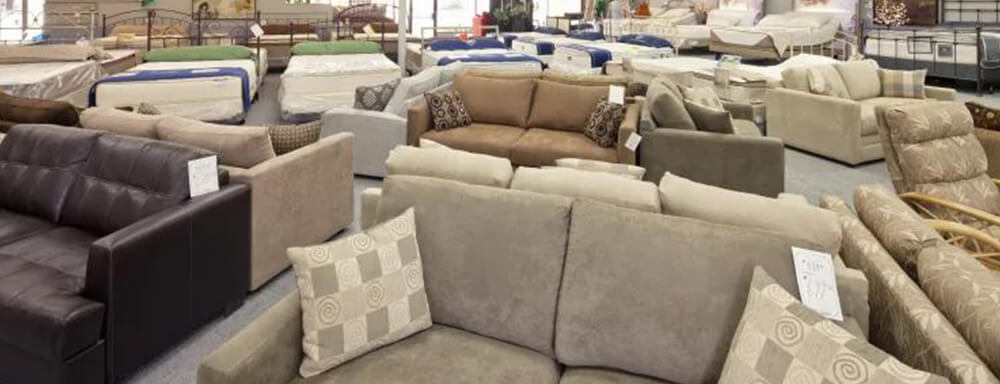
Step 4. Estimate your budget
Estimate your budget to start your own furniture store
1) Know the budget components
The cost of starting a furniture business varies from business to business, but includes the following items:
- Cost of obtaining permits and licenses and complying with state and federal environmental and safety regulations
- Buying or renting a business space costs
- The cost of purchasing primary inventory
- Equipment rental or purchase costs
- Advertising and marketing expenses
- Employee wages and benefits
2) Draft start-up costs
You need to budget correctly for your startup, including startup costs and possible debt. It helps you accurately forecast your profits in the first year of business with tax benefits. Furthermore, it is important to the success of the business as well as to communicate with investors and banks.
Step 5. Register your business name and DBA
Register a business name and DBA when opening a furniture store
1) Choose a business name
When registering a business name, the following databases should be consulted:
- Federal and State Trademarks
- State business records
- Availability of web domains
- social media presence
2) Take a DBA
DBA is a fictitious trade name that allows business owners to operate under an identifiable name without registering an entirely new business. It stands for “doing business,” which means that the business owner is still legally responsible for the business or general partnership. Some retailers use DBA as a public interface instead of a legally registered business name. However, the following three types of businesses may require a DBA:
- Branch: A single branch of a large enterprise
- Franchise
- Sole Proprietorship and General Partnership
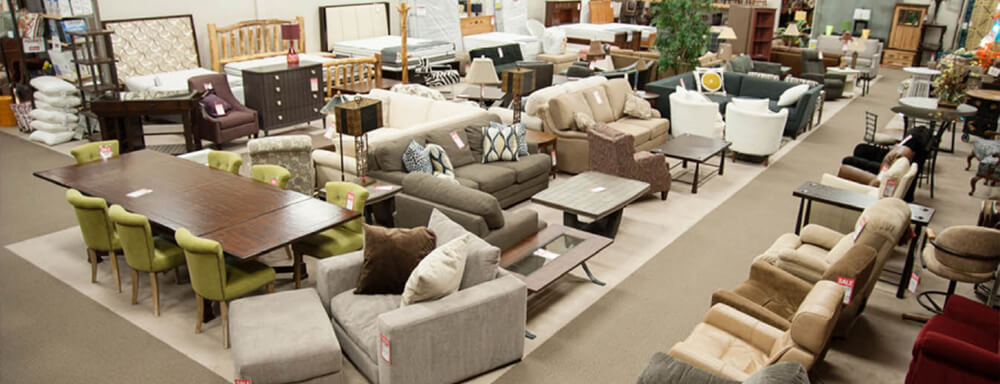
Step 6. Form a legal entity
Form a legal entity to start a furniture business, choose your business type
LLCs, LLCs, sole proprietorships, and partnerships are the most common types of business. However, if your furniture store is sued, an LLC can relieve you of personal liability. When you form an LLC, you must pay the state LLC fees.
Ask a CPA
The business structure you choose will affect how you pay your income tax. You can ask a certified public accountant (CPA), a business advisor, or a lawyer for advice on how to legally start a furniture business. Alternatively, you may also consider hiring an agent to register your LLC, as they understand the registration process and can reduce wait times. Fees usually include a free year of registered agent services.
Step 7. Get tax registration
Tax registration for your own furniture store
1) Determine the business structure and calculate the tax
Before opening a furniture store, you need to register for federal and state taxes. Depending on the structure of your business, you will have different options for how your taxes are calculated. For example, if you position yourself as an LLC, you can enjoy the same tax benefits as a small corporation (S-corp).
2) apply for tax
To apply for tax, you need to register an EIN. EIN is the Employer Identification Number. It allows you to set up a business bank account to separate your personal finances from your business. You can receive your EIN for free by fax or mail when you register on the IRS website.
Step 8. Open a business bank account
Opening a Furniture Business Bank Account
1) Understand the advantages of commercial customers
When business accounts and personal accounts are confused, your personal assets are at risk if your business is sued. Business accounts include credit cards and other grants opened in the name of the business. It has many benefits:
- Get higher credit limits and better interest rates than personal accounts
- Make tax filing and accounting easier
- Build your company’s credit history – this is great for raising capital and investing later
2) Find a trusted bank to open an account
You should refer to local assessments to find the best and friendliest national banks for loans for small businesses. For this, you should learn how to build your business credit.

Step 9. Apply for necessary permits and licenses
1) Check for necessary permits and licenses
If you don’t have the necessary permits and licenses, you could face hefty fines or even go out of business. You’ll need to visit the SBA for a reference state permit or contact your town, city, or county clerk’s office. For example, operating a furniture store requires licenses from several states:
- Certificate of Residency or CO: A document that certifies that you comply with all zoning laws, building codes, and government regulations
- Furniture requirements on greenhouse gas emissions, wood formaldehyde, toxic air pollutants from metal and wood coatings, and waste disposal
2) Get support from ASBA
You can get support from local associations listed in the ASA Local Business Resources Directory.
- The landlord is responsible for applying for a CO if you rent a place. So, before signing a lease, you need to make sure your landlord has a valid CO for the furniture store business.
- If you buy or build a website: You will be responsible for obtaining a valid CO from your local government agency.
Step 10. Registered business insurance
Apply for business insurance when opening a furniture store
1) What if I don’t buy commercial insurance?
Commercial insurance protects your company’s financial health in the event of a covered loss. To operate legally and safely, your business needs insurance.
2) Start with basic insurance
If you’re not sure about the types of risks for different businesses, you can start with general liability insurance and workers’ compensation insurance. They are the most popular coverage small businesses need.
Step 11. Your Furniture Business Needs a Website
Without a doubt, a company that uses network marketing has got great success in current sales. With a website, you can not only present your brand image but also get orders from all over the world. Try to find a good website-building company and make a website for your furniture business. Just like Aopack boxmaker, we are using a professional web-building service and Google SEO service from our marketing company. It helps us to promote our product all over the world in the past 7 years.
1) Do I need to create a website to sell furniture online?
After defining your brand, the next step is to create a website for your business. Some shop owners may worry that this is beyond their means, as they do not have any experience starting a furniture business online. LinkedIn profiles and social media accounts like Instagram, Pinterest, and Facebook are not substitutes for a business website. Even if you don’t sell furniture online, you should have a high-quality website that showcases your work, updates on your projects, your design process, and advice for shoppers.
2) Choose a friendly e-commerce platform
Creating an engaging website doesn’t require hiring an in-house developer or designer. For example, popular e-commerce platforms like Magento, WordPress, Wix, and Shopify usually have beautiful themes and templates. Also, an all-in-one service like Magento eCommerce can create an essential website for you in the fastest time possible.
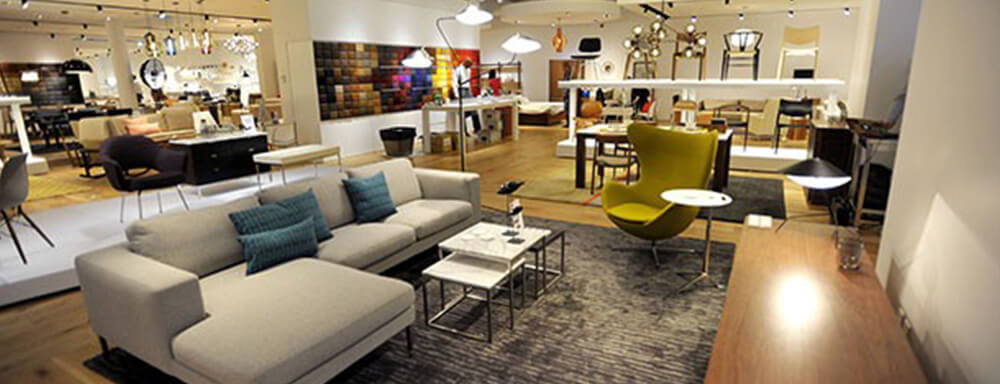
Step 12. Invest in POS Systems
Retain Customers with Furniture and Home POS Systems
Your customers don’t buy beds every day. Generally speaking, the moment when a customer buys furniture is usually an occasion. Also, if customers receive attentive service and show that you care about them, they will come back to your furniture store. Therefore, you need to create a personalized shopping experience based on sales data obtained from your physical stores and online websites. Remember, your repeat customers will bring in the highest revenue. Therefore, a POS system for furniture and household items can provide an unforgettable buying journey with the following prominent features:
- Hold Orders: If your customer like an item but wants to consult family members, they may want the item to be held for them. The feature saves items for customers and even sends emails with order information.
- Floor Sales: Help your staff move flexibly and provide on-site consultation to customers with a flexible POS system that runs on iPads
- Loyalty Program: Synchronize customer data and purchase history online and offline, and offer birthday promotions
- Points: Allows customers to use points to increase sales
- Gift Cards: Increase brand awareness with gift cards, or use store credits as a payment method or cash back
- Dropship: Allow your employees to manage this shipping method on the POS screen
Step 13. open your showroom
Open a furniture store, showcase a showroom
1) Find a suitable location
While developing your website, you can choose to rent out storefronts and studios and sell furniture to new clients. If you’re planning to open a brick-and-mortar store, find a location that caters to your customers’ needs. However, if you only run an online business, you still need to find a location for your studio. In addition, you may also need sufficient warehouse space for suppliers to easily transport, pick up, and drop off materials.
Whichever you choose will affect the physical location of your business and the capital needed to start it. So don’t choose a location based on the most reasonable rent. Instead, choose the best location you can afford to attract and effectively display your furniture to your clients.
2) Build your team
Building human resources for the furniture business
You need to start building your team, including:
- Showcase design team: submit the plan after the building is completed
- Start promoting your furniture store 8 weeks before it opens
- Purchasing Team: Work with furniture manufacturers 6 months before the first order is placed
- Flooring Sales Team: Available two weeks before the store opens
- Delivery Team: On-site rental or use a third-party delivery service
3) Arranging store layouts and visual displays
Arranging store layouts and visual displays for your furniture business
Common types of marketing include ads for seasonal items such as holiday tableware, outdoor furniture in summer, and office furniture in fall. Constantly updating your visual merchandising will help increase awareness, create an emotional connection with your customers, and boost your sales. A successful furniture store may not need unique furniture. Instead, you need to create a shopping experience and atmosphere that encourages customers to linger, experiment, and explore. Check out 15 retail windows display ideas to drive in-store traffic in 2022 and inspire your furniture showroom display ideas.
Furniture Business FAQs
Here are some common questions about starting your furniture business:
1) What is the cost of starting a furniture business?
The cost of starting a furniture business can range from $1 million to $20 million, depending on the complexity and size of the furniture store and warehouse. Hard costs like storefronts and showrooms, ongoing payroll costs (sales and delivery staff), inventory costs, and visual merchandising costs are all unavoidable.
For this, you might consider minimizing your software costs, such as building a website using the Magento platform and using a free, open-source POS for your brick-and-mortar store. From there, you can enjoy smooth data synchronization from this POS with your Magento website system.
2) Is it profitable to make furniture?
Yes, making furniture is profitable. “How profitable is the furniture business?” you may ask.” The furniture industry has one of the lowest profit margins in retail. Compared with wholesale, the profit is about 40%. Most furniture retailers have a 2% net profit after operating expenses and wages, and annual sales of more than $1 million. As a business owner, you can enjoy an annual income of $150,000 – $300,000.
During your furniture manufacturing, you should try to minimize your packaging costs, such as using an automatic boxmaker machine to reduce the labor cost, and improve your efficiency.
3) What is the day-to-day operation of a furniture store?
The day-to-day operations of a furniture store include the following tasks:
- Review the new furniture collection and decide which items will be available in your store next season
- Place an order with a furniture factory to fulfill a customer’s order, or put it in stock for immediate delivery
- Make sure that all furniture placed is clean and beautiful
- Design new displays for furniture collections
- Offer your shoppers a friendly environment with snacks, coffee, or extra entertainment
- Work with clients to find furniture that fits their style and budget
- In-house consulting for clients seeking unified design
- Schedule the delivery of furniture to customers
4) What skills do you need to build a successful furniture store?
6 tips for building a successful furniture store:
- Pick and display beautiful, popular furniture
- Perfect customer service for every transaction
- Suggest attractive combinations of furniture, rugs, lighting, and other design elements for a more personalized experience
- Train a friendly and knowledgeable salesperson to help them experience shopping
- Positive relationships with many furniture manufacturers
- Use good business skills to maintain good profit margins
5) How to Market a Furniture Business?
To market a furniture business, you need to use all available media to do social media ads to promote your new business, such as social marketing using Facebook, Pinterest, Instagram, and podcasts. To dominate your local market, you need to focus on attracting new customers to your showroom from day one. You should have more salespeople in the first week of business so no customers leave without personal attention.
Conclusion
We hope that after reading this article you understand how to start a furniture business and can take advantage of these ideas. To start your own furniture store, you need to learn to design and manufacture unique products, have a good eye for your customer’s needs, and tailor your designs to their needs. However, in addition to being a skilled furniture designer and manufacturer, you also need to know how to manage a business in order to be profitable.

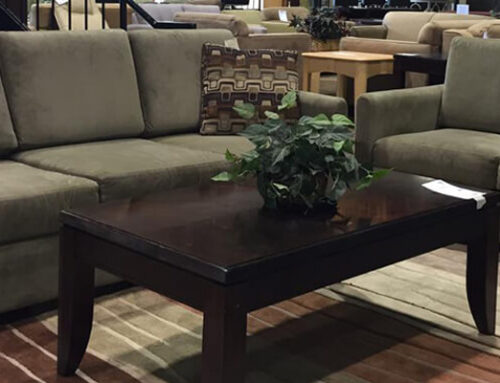

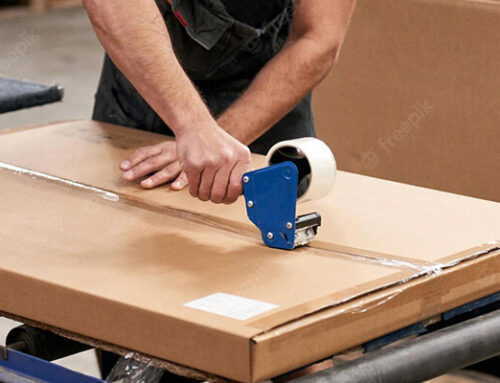
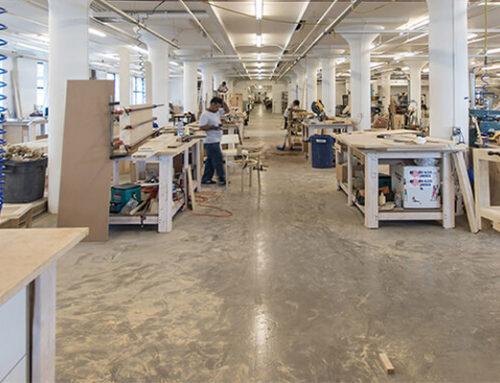
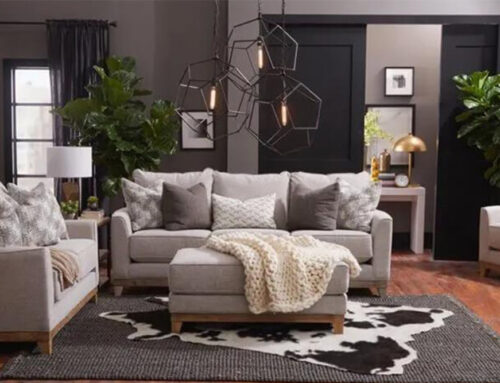
Leave A Comment